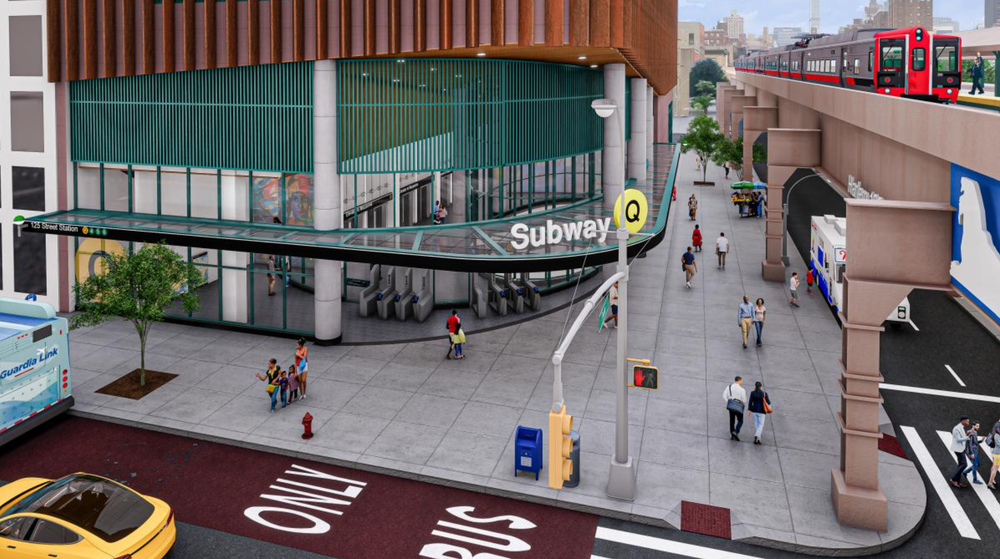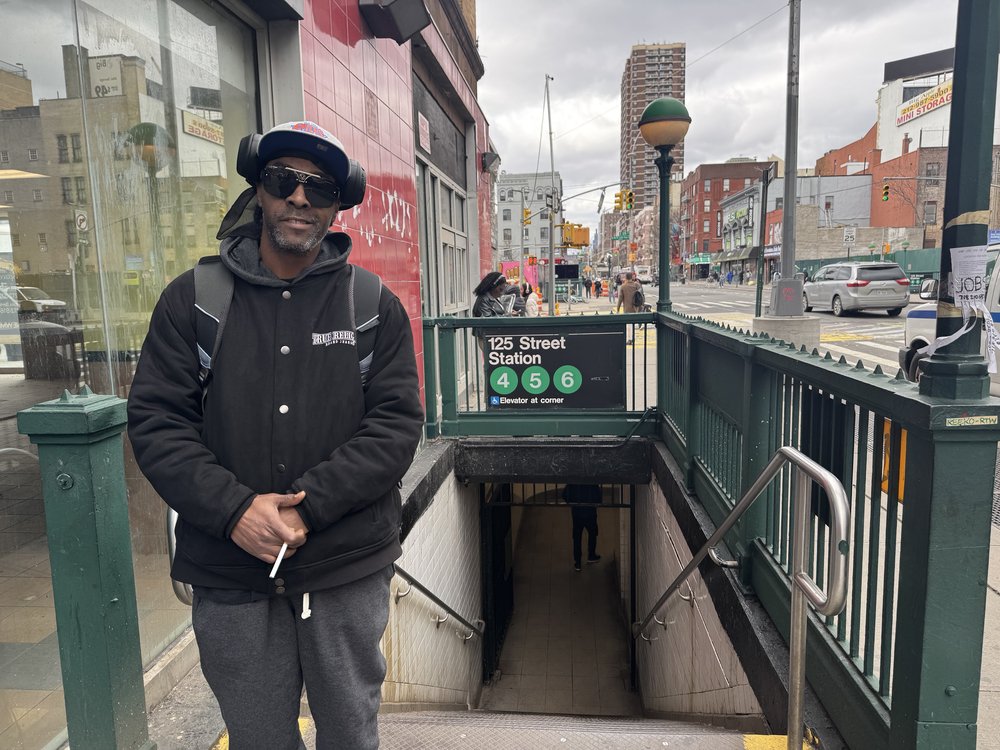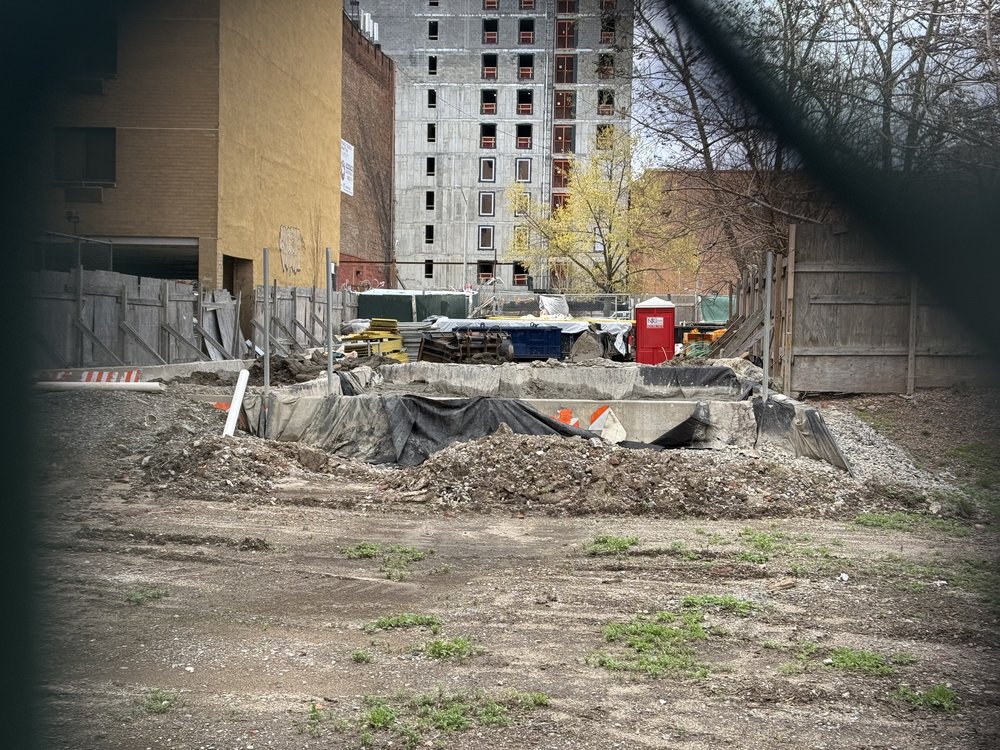As MTA moves ahead with 2nd Avenue subway extension, East Harlem locals brace for change
July 15, 2025, 5 a.m.
The project is slated to bring much more than a new train line to the long-neglected neighborhood.

Big changes are in store for East Harlem as the MTA ramps up work on the long-awaited extension of the Second Avenue subway.
The $7.7 billion project is scheduled to open in 2032, adding three new stations to the Q line. Two of them will be beneath Second Avenue at East 106th and 116th streets. A third would be an overhaul to the existing 125th Street-Lexington Avenue station, which would reshape a transit hub that sees more violent crime than any other in the city.
The MTA is currently working to finalize a contract to dig the tunnel for the extension. It represents a major step towards the completion of not just a transit line that’s been promised for roughly a century, but also a move that will change the face of one of Manhattan’s poorest areas.
Interviews by Gothamist found that for many locals, the project is a once-in-a-generation chance to make their neighborhood safer and more accessible. For others, it brings the risk of gentrification that could price them out of East Harlem altogether.
“I mean, look at the neighborhood. It needs a facelift to bring more attraction here,” said East Harlem resident Bobby Jones, 42, remarking on the conditions around the 125th Street-Lexington Avenue station. “Because if people see graffiti and all this stuff like this, drugs and needles on the ground, [they] ain’t gonna want to come around here.”

The area around the station has long been notorious for open drug use, according to interviews with nearby residents.
Since 2021, it’s also been home to a controversial safe injection site. The neighborhood has a series of methadone clinics highly concentrated along a few blocks and ranks as one of the highest areas for psychiatric hospitalizations, according to city health data.
“I avoid this station, I’d say probably after 9 p.m.,” said Neil Tetkowski, 69, who has lived in East Harlem for 20 years.
Though the work won’t be finished for at least another seven years, signs of change are already visible in East Harlem. Several lots along East 125th Street have been razed in recent years to make way for the overhauled station at Lexington Avenue.
“East Harlem residents have waited decades for improved transit access and with the support from Governor Hochul, the MTA is moving full steam ahead on the Second Avenue Subway Phase 2, which will be a gamechanger for the local community,” MTA spokesperson Eugene Resnick wrote in a statement. “We’re ready to implement best practices learned from Phase 1 [on the Upper East Side] to complete the work better, faster and cheaper, as the line will provide new transit connections, shortened commute times, affordable housing, jobs and improved quality of life.”

MTA documents show the agency plans to use eminent domain to seize at least 15 buildings — many of them residential — in East Harlem to complete the extension.
Efforts are already underway by local cultural centers, businesses and longtime residents to ensure they’re not priced out by the changes brought by the new line when it inevitably transforms their neighborhood. Mayor Eric Adams last month said he plans to sign legislation to establish East Harlem’s first-ever business improvement district, or BID, which community leaders hope will allow them to hold more sway over the area’s future.
“They deserve a commercial corridor that is safe and clean,” Adams said during a news conference. “One that is free of quality of life concerns like overflowing, trash, excessive noise, substance use and more that have persisted for far too long. These issues have kept customers, foot traffic and tourists away from enjoying the beautiful area on 125th Street. It is impacting the economic development of the area.”
Carey King, who’s behind the push to create the business improvement district, said the designation would create a dedicated funding stream from city government directly to East Harlem.
King leads Uptown Grand Central, a community nonprofit that cleans up trash on the streets and paints murals on construction fences in the area.
“The big, beautiful, global vision would be that … our streets can be clean and that our public art can shine and that people really wanna stop and spend time here,” King said. “A lot of times, people just keep their heads down when they pass through here.”
Rachel Weinberger, transportation chair of the Regional Plan Association, said bringing a new train line into a neighborhood is a “real ‘Catch 22’ situation about transportation infrastructure and the potential for gentrification.”
“There’s a concern that there’s insufficient access provided to the population that’s living near now, the current population and the trick is how to provide access without creating displacement,” Weinberger said. “ On the other hand, when you have an area that's under-resourced … it means that you don’t have the amenities that people in the neighborhood want and need. And so sometimes, a transportation investment can help bring some of those things.”
Advocates are also gunning to preserve some of East Harlem's cultural institutions, like the Caribbean Cultural Center and the home of the poet Langston Hughes on East 127th Street.
“There needs to be more intention and equal distribution of funds of organizations and individuals and projects that actually reflect the community that has been here the longest,” said Sabine Blaizin, Director of Programs at the Caribbean Cultural Center, which sits right across the street from the Lexington Avenue subway station. “And the fear is a lot of this erasure.”
MTA plans to hire $186M consultant to oversee Second Avenue subway construction